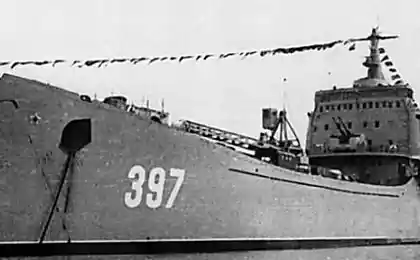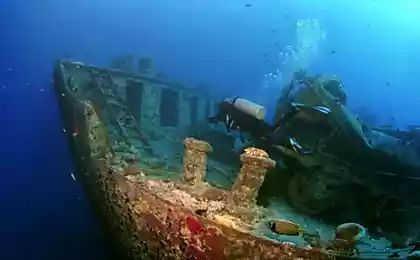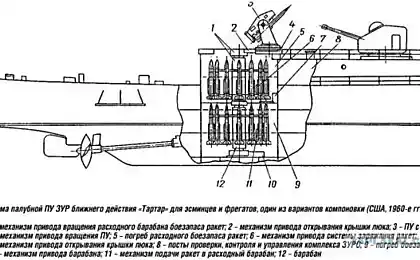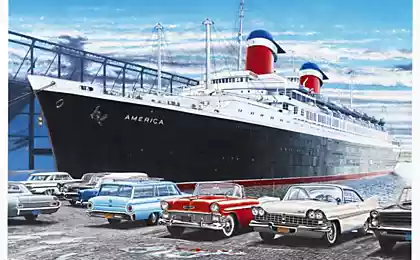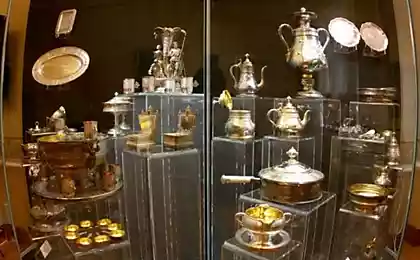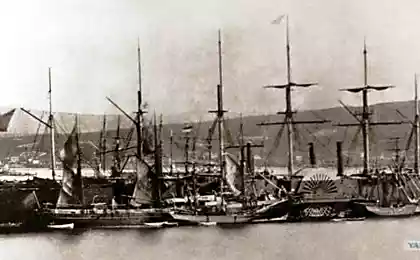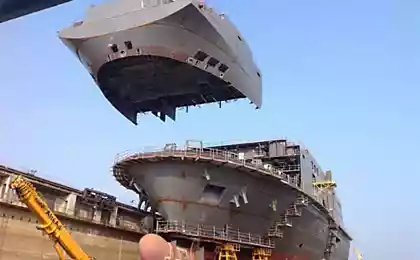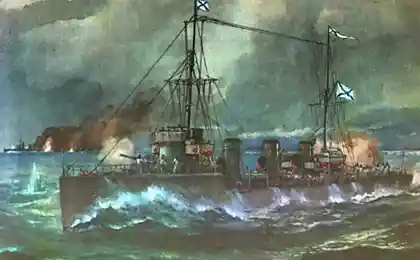1084
A survey of the sunken "Thistlegorm"
Thistlegorm, which translated from the Gali means "Blue Thistle" - transport cargo ship, which was carrying cargo during the war naval forces of Great Britain. In 1941, German bombers found him on the approach to the Suez Gulf and sank. Since then, on board so nothing has changed - trucks, motorcycles and the surviving ammunition covered with rust, and tropical fish swims slowly past the twisted hull. "Thistlegorm" was built in shipyards' Thompson and Sons "in Sunderland for" Albin Line Ltd "in April 1940. The ship was in private ownership, but also partly funded by the British government and has been classified as an armed freighter. Due to wartime "Thistlegorm" was armed with 4, 7-inch (120 mm) anti-aircraft guns and heavy machine gun after the construction of the ship. Based in Sunderland.
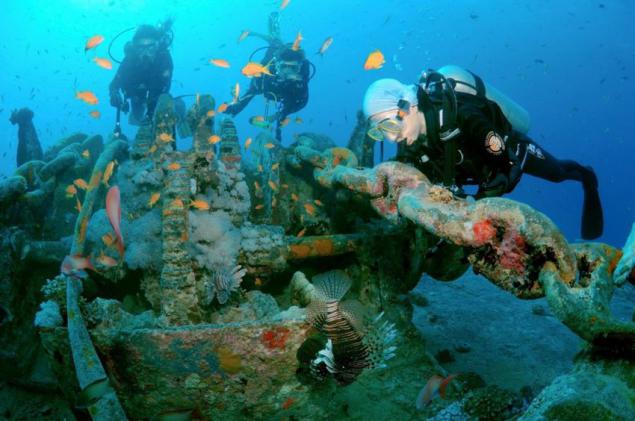
The ship carried three successful flight after his descent. The first was in the United States to pick up the steel rails and aircraft, the second in Argentina for the grain, and the third to the West Indies for the rum. Prior to his fourth and last voyage of the "Thistlegorm" was renovated in Glasgow.
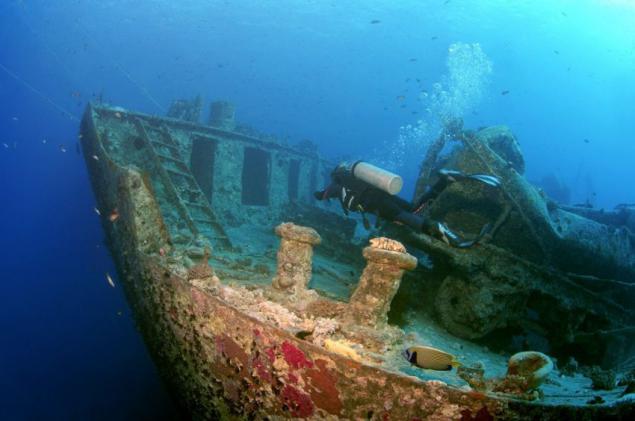
"Thistlegorm" was involved in a secret operation called "crusade", the essence of which was that the convoy of 16 ships have to sail around Africa to ensure the equipment of troops operating in the north of the continent. This route was much longer crossing the Mediterranean, but allowed British Transport without risk to reach Alexandria. Assigned to the freighter task was delivery of ammunition, equipment and technology for the Eighth British Army, there are 200 000 people, which was located in Egypt and eastern Libya. In May 1941, "Thistlegorm" with a crew of 39 people came from the Scottish port of Glasgow.

The ship was equipped with a cargo of ammunition, bombs of different purposes, anti-tank mines, rifles, "Lee-Enfield MK III", hundreds of motorcycles BSA W-M20, Matchless G3L and Norton 16H, cars Bedford, Morris and Ford, trailers, portable power generators, spare parts for aircraft and automobiles, medicines and rubber boots. Addition to the main cargo were two light tank MK II, two locomotives Stanier Class 8F complete with water tanks.

When the "Thistlegorm" finishes its way into the waters of the Red Sea, were ordered to drop anchor in the Strait of Gubal, near the reef Shaab Ali and wait for an opportunity to pass the Suez Canal, is temporarily blocked by a German mine trodden ship.
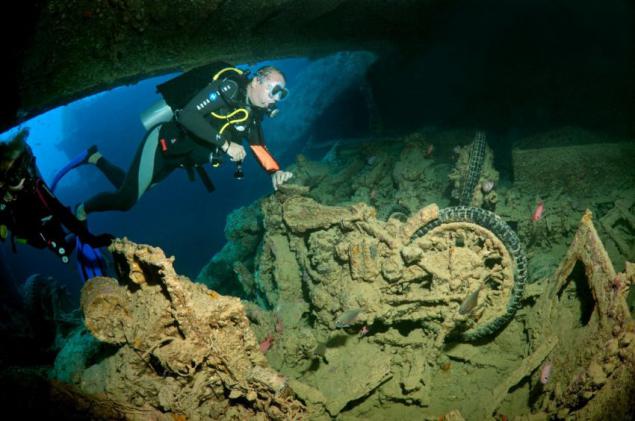
On the night of 5 to 6 October 1941, two German Heinkel He 111 bomber, exiled from Crete to the exploration and discovery of British transports, quite accidentally stumbled into one of the bays at the entrance to the Gulf of Suez on the anchored trucks "Thistlegorm". On deck were two light tanks, two railroad cars and two locomotives. At full moon, going from the stern, and without encountering the slightest anti-aircraft fire, planes attacked him. The bombs were just the fourth hold, which was loaded with ammunition ... Foods were separated, the deck littered with debris. In 1 hour and 30 minutes the ship sank and sank with a roll of about 45 ° at a depth of about 30 m.
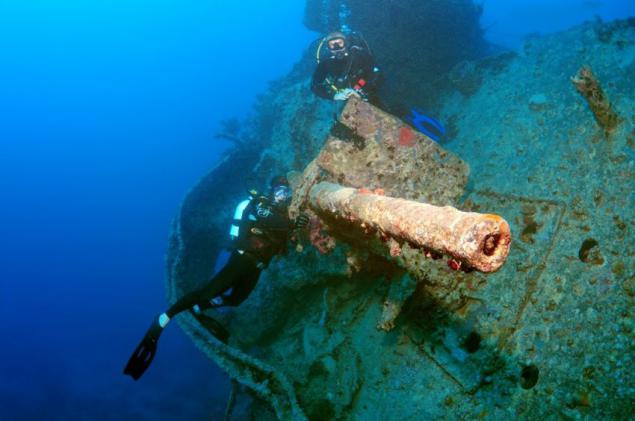
For the first time, "Thistlegorm" was discovered in March 1955 by a team of Jacques-Yves Cousteau during his expeditions into the Indian Ocean on the research vessel "Calypso". Follow the prompts local fishermen, Cousteau was able to find the skeleton of a sunken ship and picked up a few items, including a motorcycle, the captain's safe, and ship's bell. These studies are described in the famous book of Jacques Yves Cousteau "The Silent World" and the scene underwater wreck entered the eponymous documentary.
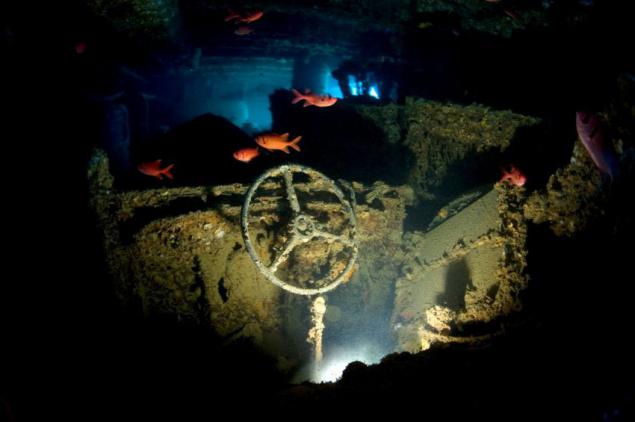
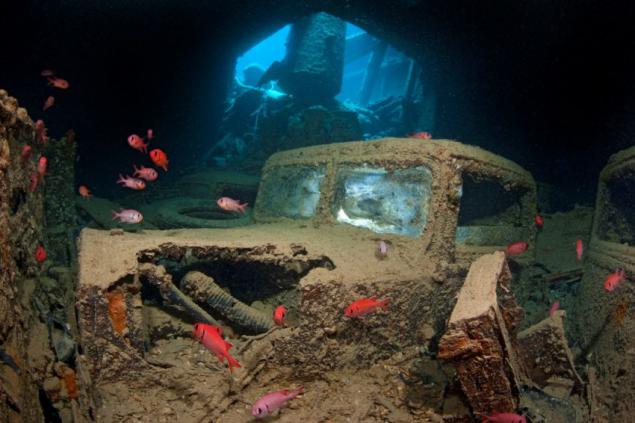
Driving British ship 'Thistlegorm ».
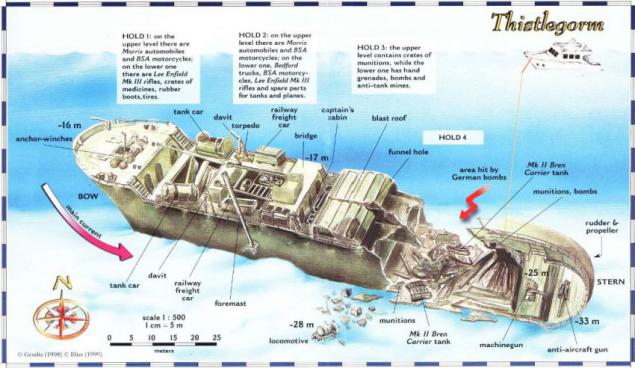
Source: wisaev.livejournal.com

The ship carried three successful flight after his descent. The first was in the United States to pick up the steel rails and aircraft, the second in Argentina for the grain, and the third to the West Indies for the rum. Prior to his fourth and last voyage of the "Thistlegorm" was renovated in Glasgow.

"Thistlegorm" was involved in a secret operation called "crusade", the essence of which was that the convoy of 16 ships have to sail around Africa to ensure the equipment of troops operating in the north of the continent. This route was much longer crossing the Mediterranean, but allowed British Transport without risk to reach Alexandria. Assigned to the freighter task was delivery of ammunition, equipment and technology for the Eighth British Army, there are 200 000 people, which was located in Egypt and eastern Libya. In May 1941, "Thistlegorm" with a crew of 39 people came from the Scottish port of Glasgow.

The ship was equipped with a cargo of ammunition, bombs of different purposes, anti-tank mines, rifles, "Lee-Enfield MK III", hundreds of motorcycles BSA W-M20, Matchless G3L and Norton 16H, cars Bedford, Morris and Ford, trailers, portable power generators, spare parts for aircraft and automobiles, medicines and rubber boots. Addition to the main cargo were two light tank MK II, two locomotives Stanier Class 8F complete with water tanks.

When the "Thistlegorm" finishes its way into the waters of the Red Sea, were ordered to drop anchor in the Strait of Gubal, near the reef Shaab Ali and wait for an opportunity to pass the Suez Canal, is temporarily blocked by a German mine trodden ship.

On the night of 5 to 6 October 1941, two German Heinkel He 111 bomber, exiled from Crete to the exploration and discovery of British transports, quite accidentally stumbled into one of the bays at the entrance to the Gulf of Suez on the anchored trucks "Thistlegorm". On deck were two light tanks, two railroad cars and two locomotives. At full moon, going from the stern, and without encountering the slightest anti-aircraft fire, planes attacked him. The bombs were just the fourth hold, which was loaded with ammunition ... Foods were separated, the deck littered with debris. In 1 hour and 30 minutes the ship sank and sank with a roll of about 45 ° at a depth of about 30 m.

For the first time, "Thistlegorm" was discovered in March 1955 by a team of Jacques-Yves Cousteau during his expeditions into the Indian Ocean on the research vessel "Calypso". Follow the prompts local fishermen, Cousteau was able to find the skeleton of a sunken ship and picked up a few items, including a motorcycle, the captain's safe, and ship's bell. These studies are described in the famous book of Jacques Yves Cousteau "The Silent World" and the scene underwater wreck entered the eponymous documentary.


Driving British ship 'Thistlegorm ».

Source: wisaev.livejournal.com
